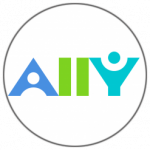This content was published: May 7, 2020. Phone numbers, email addresses, and other information may have changed.
Thinking about Accessibility in 2020
Posted by Rondi Schei
 The instructional landscape has shifted considerably in the past month and a half. It has brought challenges, but has also highlighted the resilience of PCC instructors. You have learned new tools and stretched outside your comfort zone to provide your students with the best experience possible under the circumstances.
The instructional landscape has shifted considerably in the past month and a half. It has brought challenges, but has also highlighted the resilience of PCC instructors. You have learned new tools and stretched outside your comfort zone to provide your students with the best experience possible under the circumstances.
The Accessible Technology Policy states that staff and faculty will create accessible documents, videos, and other ICT (Information and Communication Technology), attending trainings or getting technical support as needed. More and more, instructors have been reaching out to learn about how to format accessible course materials for all their students. So, I thought I share with you some info and resources that are available to you here at PCC!
Accessibility ≠ Availability
What does this mean? Posting course materials in D2L Brightspace does indeed make them available for your students. However, the formatting you choose may hinder their ability to read, interpret, and comprehend what you would like them to learn. For example:
- A document with small fonts, tight line spacing, long paragraphs, no section headers, long web addresses, and lots of colors can be difficult for anyone to absorb, but it is especially so for students with learning and cognitive disabilities.
- A video without closed captions may be difficult for someone where English is a second language, who is hearing impaired, or who can’t wear headphones because they have to keep an eye on their noisy children.
- A scanned PDF will not be readable by those who rely on text to speech software, like those with learning/cognitive disabilities or those who are visually impaired.
So, while the course materials are available, they may not be “accessible” for the student.
What can you do?
The applications we use to make course materials are loaded with time saving features to help us format documents quickly and ensure they are accessible for a wide range of student needs! The old way of formatting can be thrown out the window. Learning how to use these tools effectively is a sure-fire way to save time, give your documents a professional flair, and make them accessible all at once. That sounds like a triple win!
Create Accessible Documents
Here are some training lessons that an help you get started! They are available through MyCareer@PCC and can be tracked as professional development!
- Accessibility and Universal Design: Learn why accessibility matters and the concepts behind Universal Design. This training will take 30-60 minutes.
- Accessible Word Documents: Learn how to make your Word Documents accessible for posting digitally. This training will take 30 – 60 minutes.
- Accessible PowerPoint Slides: Learn how to make your Word Documents accessible for posting digitally. This training will take 30 – 60 minutes.
- Accessible PDFs: Learn how to make your PDFs accessible for posting digitally. This training will take 30 – 60 minutes.
You will need to sign in using your PCC credentials and click the Launch button to begin. Note: You may need to “Allow Pop-ups from pcc.csod.com” and click the Launch button again.
Use Accessibility Checkers
Use these to do a check of existing documents before uploading into D2L Brightspace!
Ally in D2L Brightspace – Coming Soon!
 A new tool will be released in all Summer term D2l Brightspace courses. It is called Ally. It is amazing and I highly recommend you take advantage of it, especially after taking some of the training above. There are three key features for instructors to know about!
A new tool will be released in all Summer term D2l Brightspace courses. It is called Ally. It is amazing and I highly recommend you take advantage of it, especially after taking some of the training above. There are three key features for instructors to know about!
- Dial icon: There is a dial that let’s you know about the level of accessibility of the documents you upload into D2L Brightspace. Don’t worry, you students do not see it, only you do! Click on the indicator and you will be given an accessibility percentage score, specific issues affecting the file, and instructions for improving the file.
- Instructor Course Report: There is a dashboard that will allow you to see that accessibility of all your course materials at-a-glance. Ally categorizes issues in order of priority for you. That way you can focus on what matters most! To view the dashboard, you may need to add the Ally tool to your navigation bar.
- Alternative Formats: This is really for your students. They have the ability to download a variety of file types. With Ally, students who are auditory learners can convert documents to audio files, students who like to use e-readers can export files to ePub for highlighting and note-taking support, students who use braille can even download the braille equivalents! There are more examples to choose from depending on file type.
Go to the PCC Ally resource page to learn more about what Ally can do for you! :)
Additional PCC Resources
- Accessible Syllabus Templates
- Creating Accessible Content
- ADEC Accessibility Tips
- Tips for Faculty Disability Services
- Guidance from Accessible Ed & Disability Resources
Take care all!
Rondi :)
